Chris Howard's Blog, page 12
July 28, 2023
Building Worlds without Becoming the Minister for Tourism
New post: Building Worlds without Boring your Readers or Becoming the Minister for Tourism (Originally published in Now Write! Science Fiction, Fantasy and Horror, Penguin 2014)
https://www.patreon.com/posts/build-worlds-for-86806251
June 30, 2023
Timelapses: Imaging Sessions in My Backyard This is pretty much...
Timelapses: Imaging Sessions in My Backyard
This is pretty much what my backyard looks like on any given night, different scopes and imaging trains, clouds and all.
A compilation of some of the time-lapses I’ve been shooting over the last month during my imaging sessions. This is what my backyard looks like at night, with mount and scopes following the Milky Way, clouds sliding in fast and leaving. Sometimes staying too long. The green checks and swirls in the video segment of stacked images are fireflies. I shot all of this with the Sony A7s and Irix 15mm f/2.4.
June 25, 2023
Several stacked frames from a set of time-lapse images I shot...
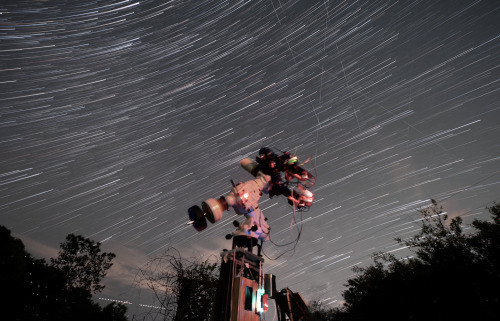
Several stacked frames from a set of time-lapse images I shot last week, showing my dual-scope setup, narrowband and RGB color.
June 19, 2023
Setting up two refractors, the William Optics GT81 (right) and...
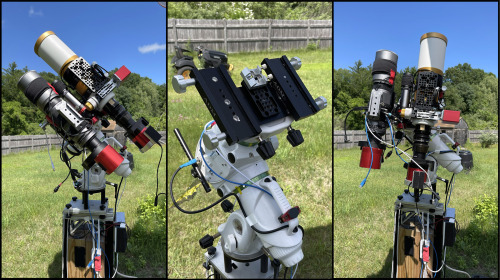
Setting up two refractors, the William Optics GT81 (right) and William Optics SpaceCat 51 (left). I’m running monochrome with 3nm filters on the SpaceCat and RGB color on the GT81. It’s beautiful out there now, but into the evening the forecast is calling for a solid cloud cover. I’ll be ready if there’s a decent break in the clouds!
June 11, 2023
A star trails view of the NCP (North Celestial Pole) from my...
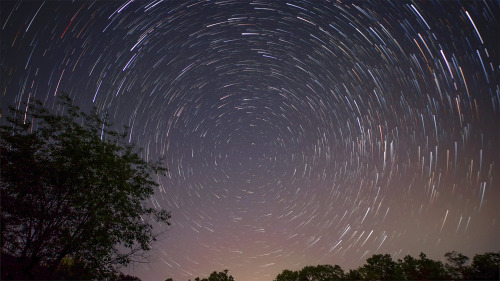
A star trails view of the NCP (North Celestial Pole) from my backyard, five hours of 15-second exposures stacked together to show the Earth’s rotation. That star in the middle is the North Star, Polaris, the star at the end of the handle in the Little Dipper asterism. Polaris is very close to the NCP, only 4 degrees off the actual point in space that marks our planet’s North Celestial Pole. Basically, if you’re standing in a fixed position on the surface (say, in coastal New Hampshire at around 43° latitude) and draw an imaginary line along Earth’s axis of rotation, out into space, until you reach a single point in space–that’s the celestial pole, and from your perspective, all stars will rotate around that point. In the southern hemisphere, looking south, you have the SCP, South Celestial Pole, which doesn’t have a bright star in close proximity–so imagine this image without that bright point of light in the center.
What is also interesting in this image, and makes it really clear, is that stars have color. Blue stars “burn” hotter and faster, redder stars are generally cooler and longer-lived. Our star, the Sun, is somewhere between, a medium-sized main sequence star about halfway through its 11-billion-ish year lifespan.
Notes: 1104 x 15-second exposures, Sony A7s, Irix 15mm f/2.4 lens, stacked in StarStax.
June 10, 2023
Dark Nebulae in Cygnus We had a good run of clear night skies...
Dark Nebulae in Cygnus
We had a good run of clear night skies through May and I was out as often as I could be with the 800mm f/4 Newtonian and the ZWO ASI1600MM-Pro mono with 3nm filters. I spent several nights capturing data around Cygnus, including this one, LDN 935,the gulf of Mexico region of NGC 7000, the North Amaerica Nebula in Ha. And over the following two nights I focused on a beautiful string of dark nebulae just below NGC 7000. The top of this one is Dobashi 2961, with another ten or so Dobashi objects trailing after. I have never captured this dark nebula before, but glad I stopped to check it out–I was just browsing around the DSS sky survey data, stopping on interesting structures around Cygnus. And then spent a couple nights on it.
Music:
TrackTribe - “Dream It”
https://youtu.be/v-npd8MIFQ8
June 7, 2023
Dark nebulae B312, B313, and planetary nebulae PN G016.3-02.3...
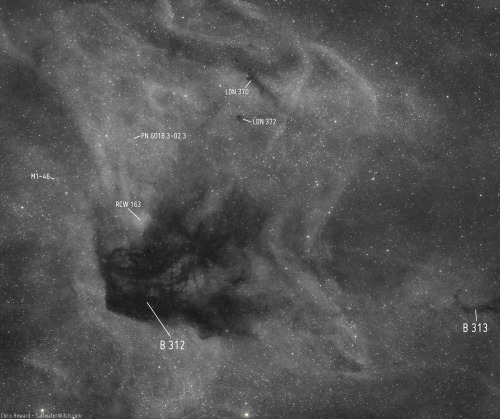
Dark nebulae B312, B313, and planetary nebulae PN G016.3-02.3 and M1-46 in Scutum. 36 x 240-second Ha subs with the William Optics GT 81 and ZWO ASI1600MM-Pro monochrome camera.
June 2, 2023
Dark nebula Dobashi 2961, et al. below the North America Nebula,...
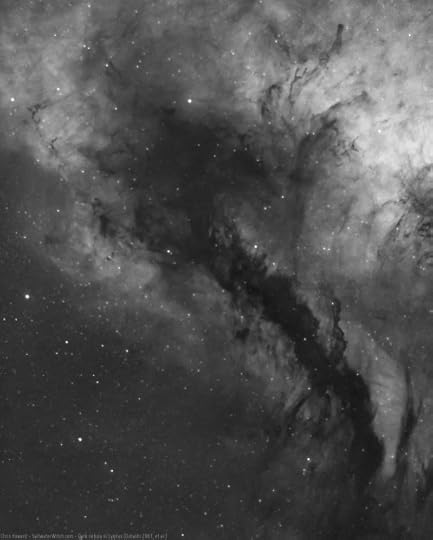
Dark nebula Dobashi 2961, et al. below the North America Nebula, 3 nanometer hydrogen-alpha. 52 x 300 second exposures stacked in DSS. #ZWO ASI1600MM-Pro mono camera. This one didn’t make it into the Spring 2023 video because I didn’t have time to process the data.
May 30, 2023
NGC 6888, the Crescent Nebula in Cygnus (stars removed)....
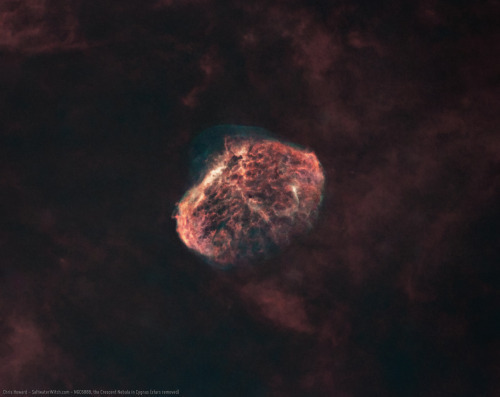
NGC 6888, the Crescent Nebula in Cygnus (stars removed). Apertura 800mm f/4 newtonian, 28 x 300 exposures with the ZWO ASI071MC cooled to -10C, Optolong dual-band l-eXtreme filter with 7nm bandpasses at Ha and OIII, Sky-Watcher EQ6-R Pro mount, William Optics 32mm/120mm FL guide scope + ZWO ASI290MM guide camera. The Crescent is close to 5000 lightyears away, about 25 lightyears across at its widest point, roughly 237 trillion kilometers wide (150 trillion miles).
May 29, 2023
The “Propeller Nebula” in Cygnus (DWB 118). Imaging notes: 46 x...
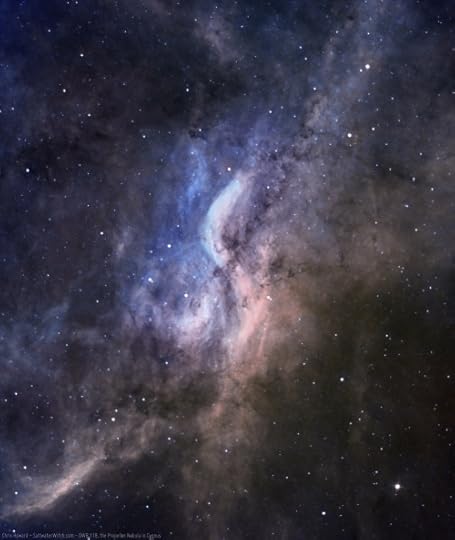
The “Propeller Nebula” in Cygnus (DWB 118). Imaging notes: 46 x 300-second exposures, 3nm Ha filter and 48 x 300-sec with the 3nm OIII filter, ZWO ASI1600MM-Pro monochrome camera cooled to -10C, 800mm f/4 Newtonian scope, Sky-Watcher EQ6-R Pro mount, William Optics 32mm/120mm FL guide scope + ZWO ASI290MM-Mini guide camera. More of my astro stuff here: https://SaltwaterWitch.com



